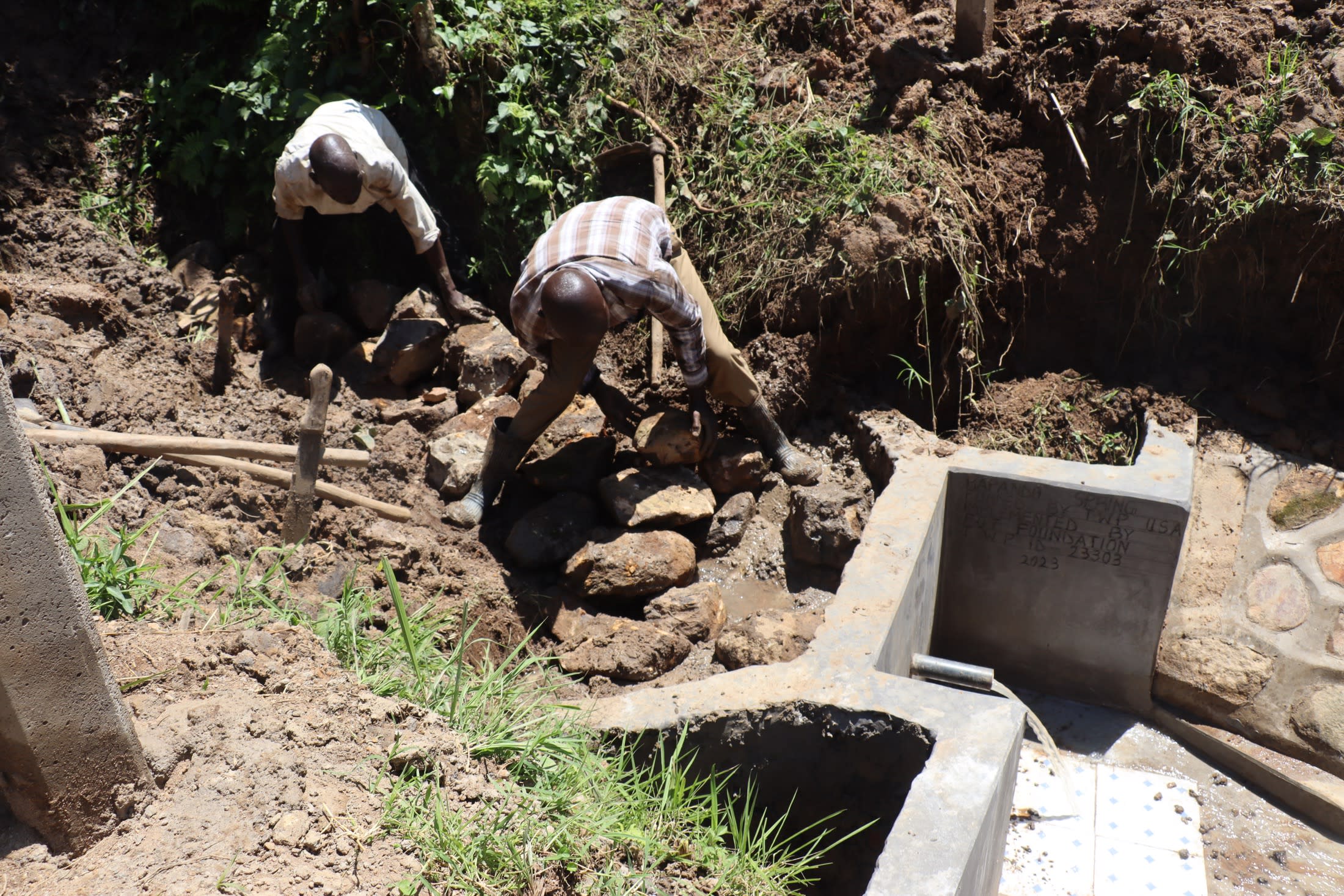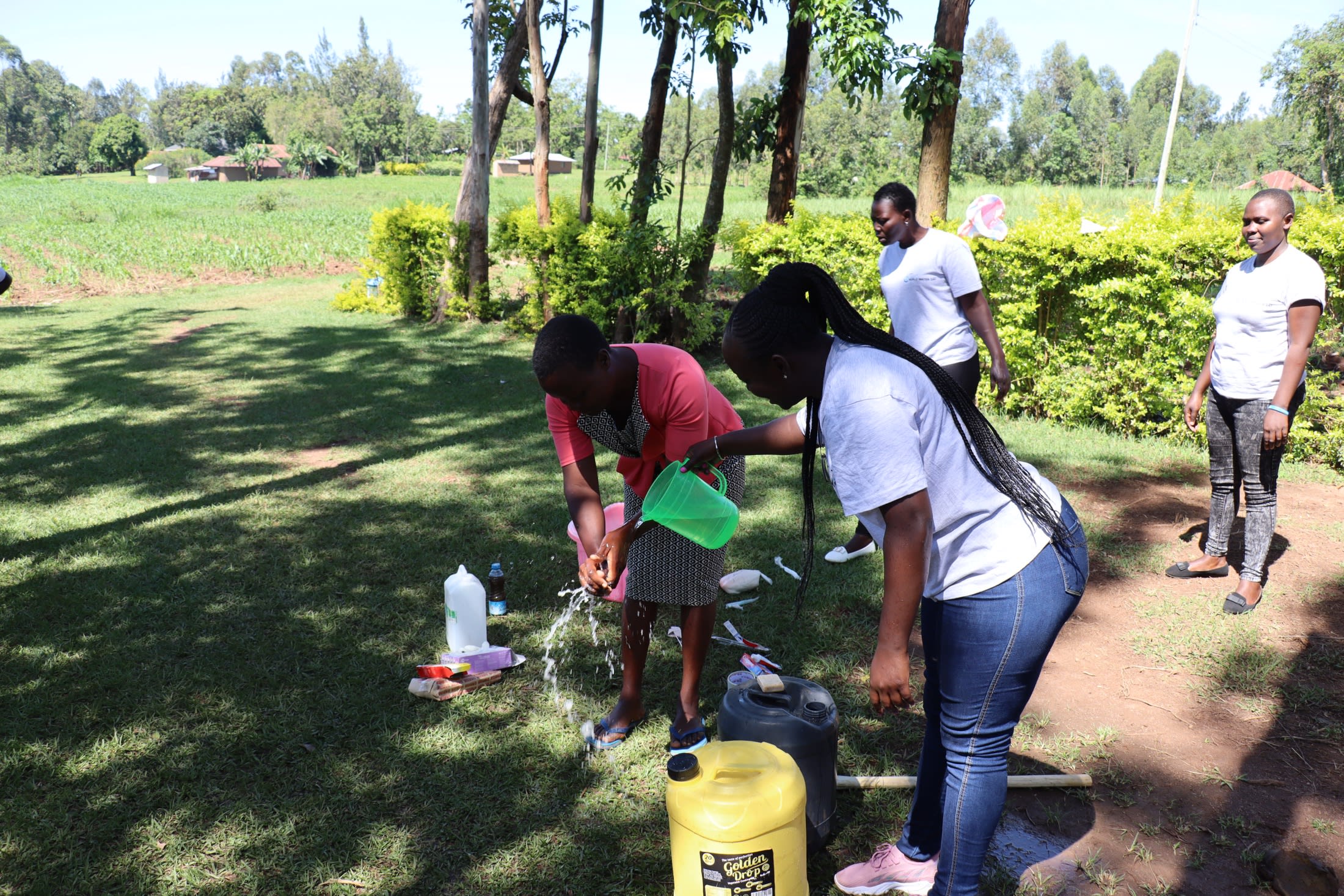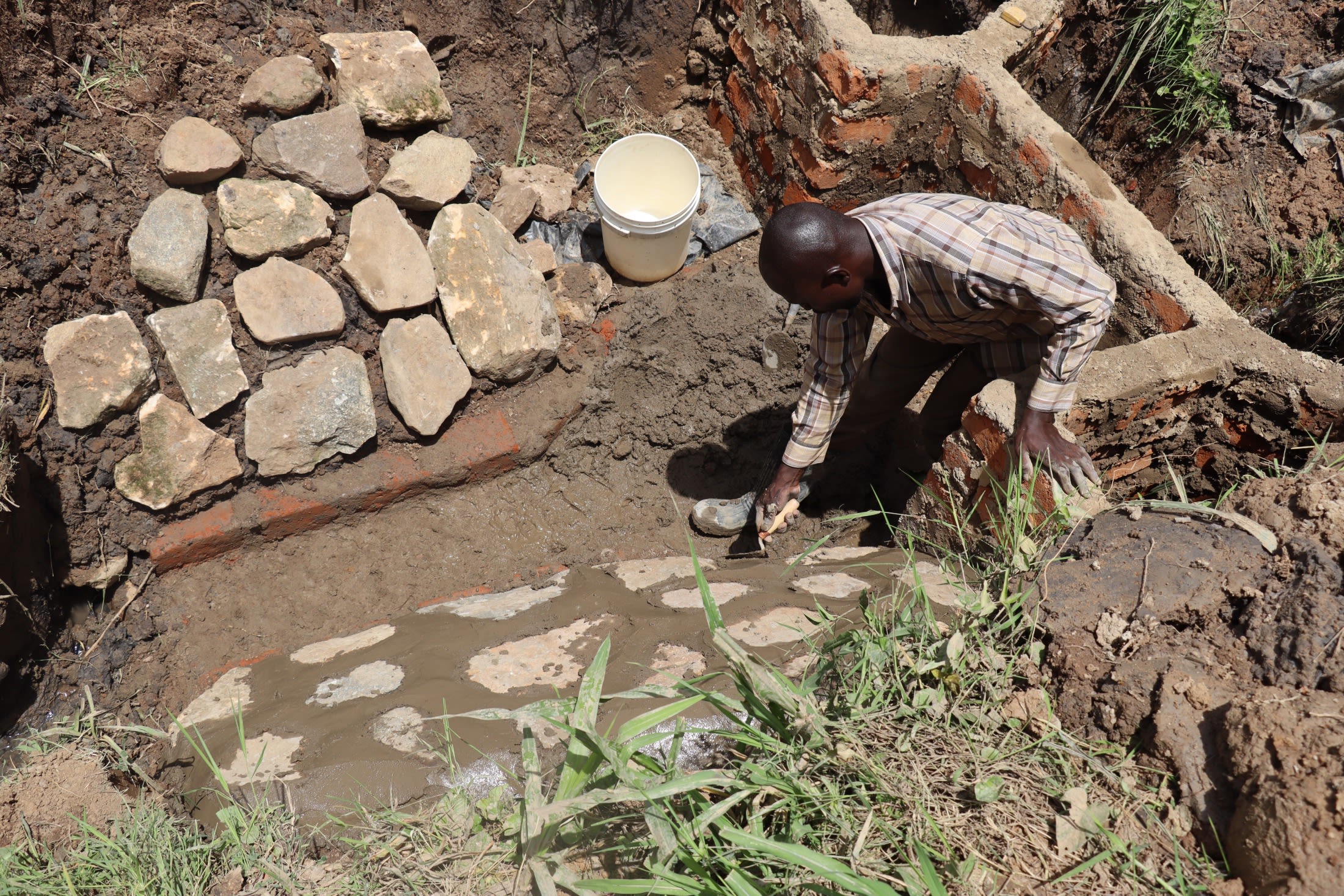Unprotected Rapando Spring is the primary water source for the 245 people living in the community of Isongo.
Most people fetching water here live hand to mouth, so any wasted time attempting to collect water or wasted finances used to treat water-related diseases cost them resources they can not afford to lose.

The spring being relied upon faces multiple challenges. It is wide open to contamination of all sorts, from humans and animals alike. And during the rainy season, it becomes especially difficult to navigate the area because of mud which inevitably runs into the water source, making it even dirtier.
"I have found water covered by spider webs. I always remove it and wait for it to settle before fetching [it]. This sometimes scares me to [not want to] come to the spring and fetch water," said 14-year-old Boaz, shown below scooping water.

Because the small, shallow pool is the only water source for people to use in the area, the spring is overcrowded, causing frustration among people as they wait for their turn. Community members must bend over and either use a small scooping jug to fill their larger container slowly, or they must lay their containers sideways in the water, causing the sediment and mud from the bottom to be stirred up and the individual after them to wait for the water to settle again before collecting. Community members falsely believe that less muddy water equals cleaner water, but the frequent reports of stomach aches and visits seeking medical treatment tell the true story. The water is contaminated regardless of how it appears.
Our field officer, Protus Ekesa, explained, "The water crisis affects the community members in terms of time management. Since the water point is used by more people, it's one's responsibility to ensure they come to fetch water when people have not yet crowded at the spring. This wastes their time because they have to queue to get clean water. Most people, therefore, decide to wake up early and go fetch water before going to the farm. Sometimes they get to the farm and are unable to complete the day's work."

"I tend to waste a lot of time at the spring, especially when we have a function because pressure mounted on the water leads to it being dirty. For example, when we had a wedding on [the] 11th of June this year, 2022," said 32-year-old farmer Judith Nandwa shown above carrying water.
The people living in Isongo need a water source that can quickly provide sufficient, safer water to focus their attention on the other important tasks they need to accomplish.
What We Can Do:
Spring Protection
Protecting the spring will help provide access to cleaner and safer water and reduce the time people have to spend to fetch it. Construction will keep surface runoff and other contaminants out of the water. With the community's high involvement in the process, there should be a good sense of responsibility and ownership for the new clean water source.
Fetching water is a task predominantly carried out by women and young girls. Protecting the spring and offering training and support will, therefore, help empower the female members of the community by freeing up more of their time and energy to engage and invest in income-generating activities and their education.
Training on Health, Hygiene, COVID-19, and More
To hold training, we work closely with both community leaders and the local government. We ask community leaders to invite a select yet representative group of people to attend training who will then act as ambassadors to the rest of the community to share what they learn.
The training will focus on improved hygiene, health, and sanitation habits in this community. We will also have a dedicated session on COVID-19 symptoms, transmission routes, and prevention best practices.
With the community's input, we will identify key leverage points where they can alter their practices at the personal, household, and community levels to affect change. This training will help to ensure participants have the knowledge they need about healthy practices and their importance to make the most of their water point as soon as water is flowing.
Our team of facilitators will use a variety of methods to train community members. Some of these methods include participatory hygiene and sanitation transformation, asset-based community development, group discussions, handouts, and demonstrations at the spring.
One of the most important issues we plan to cover is the handling, storage, and treatment of water. Having a clean water source will be extremely helpful, but it is useless if water gets contaminated by the time it is consumed. We and the community strongly believe that all of these components will work together to improve living standards here, which will help to unlock the potential for these community members to live better, healthier lives.
We will then conduct a small series of follow-up trainings before transitioning to our regularly scheduled support visits throughout the year.
Training will result in the formation of a water user committee, elected by their peers, that will oversee the operations and maintenance of the spring. The committee will enforce proper behavior around the spring and delegate tasks that will help preserve the site, such as building a fence and digging proper drainage channels. The fence will keep out destructive animals and unwanted waste, and the drainage will keep the area's mosquito population at a minimum.




 Protected Spring
Protected Spring
 Rehabilitation Project
Rehabilitation Project


















 Community members transplanted grass onto the backfilled soil to help prevent erosion. The collection area was fenced to discourage any person or animal from walking on it. Compaction can lead to disturbances in the backfill layers and potentially compromise water quality.
Community members transplanted grass onto the backfilled soil to help prevent erosion. The collection area was fenced to discourage any person or animal from walking on it. Compaction can lead to disturbances in the backfill layers and potentially compromise water quality.











